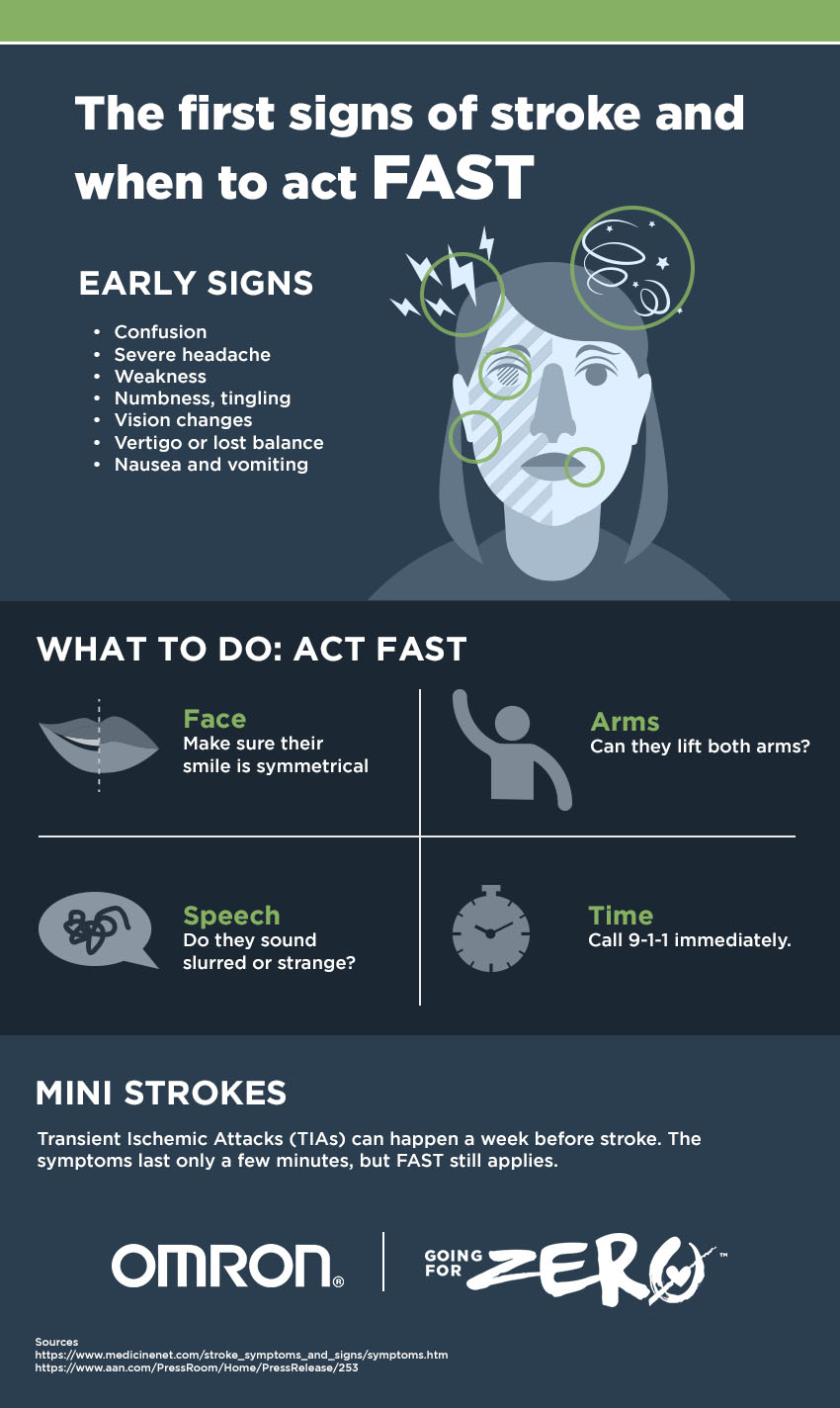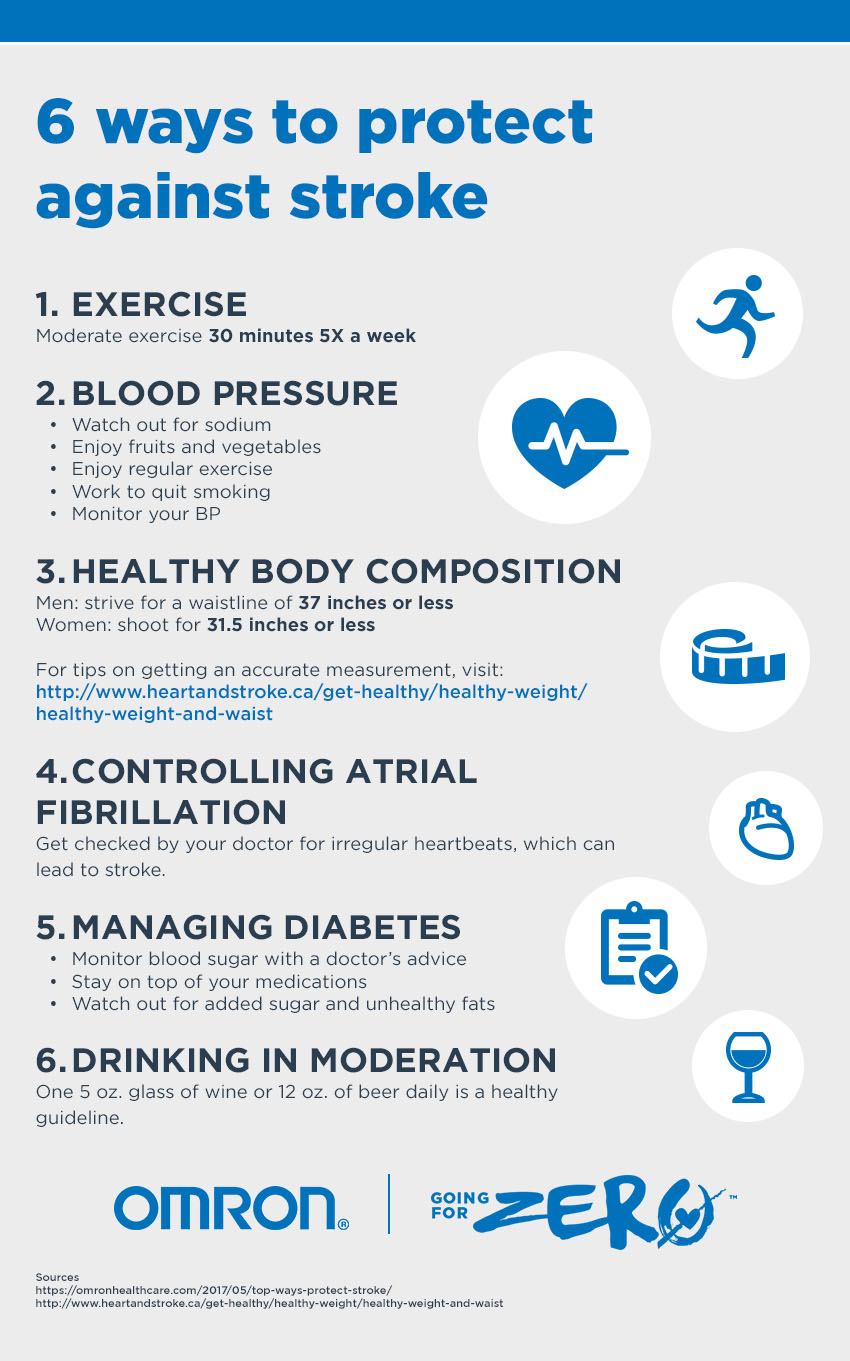October 29, 2018 is World Stroke Day, and the American Stroke Association is focusing on two themes:
- Knowing the warning signs of stroke
- Acknowledging the recovery and hope that can follow a stroke
One in six people will experience a stroke in their lifetimes, totaling an estimated 17 million strokes every year. These are high stakes. Fortunately, the brain is resilient, and can find ways to adapt to daily needs after a stroke. But the first orders of business are prevention and recognizing stroke signs early.
1) Recognize stroke warning signs and act FAST
Confusion, headache, weakness, and speech or vision changes can be signs of stroke. Here’s what to do if you think someone may be experiencing a stroke event.
Face – Ask the person to smile and see if their mouth looks asymmetrical. Look for other signs that one side of the face is different than the other, like a right or left drooping eye.
Arms – Ask them to lift their arms and note if they can do so as easily on both sides.
Speech – Have them repeat a simple sentence like “January is the month before February,” then listen for slurred or strange speech.
Time – It’s time to call 911 if you see any of these signs.
Also be aware of “mini strokes”
Transient Ischemic Attacks (TIAs) are strokes that last a short period of time. They may be warning signs of a full stroke, and can happen up to a week before. These signs of a TIA will appear very suddenly:
- Numbness or weakness of the face, arm or leg, especially on one side
- Confusion or problems understanding
- Difficulty speaking
- Vision changes in one or both eyes
- Dizziness, loss of balance or coordination, or difficulty walking
- Severe headache

2) After stroke: The power of recovery
There is life after stroke! It is possible to relearn skills that were lost because of the effects of stroke on the brain. And with rehabilitation, stroke survivors can regain independence and quality of life.
Types of stroke rehabilitation activities include:
- Physical activities like motor skills exercises
- Electrical stimulation of muscles, and even robotic devices to help limbs grow stronger and improve function
- Cognitive therapy for memory, speech and mental and emotional wellbeing
There are different types of facilities that can help with stroke rehabilitation. After stabilizing your health, your doctor may recommend treatment locations like:
- Inpatient rehabilitation units
- Outpatient units
- Skilled nursing facilities
- Home-based programs
Stroke facts
- Stroke kills about 140,000 Americans each year
- These deaths happen every 4 minutes
- About 185,00 strokes—nearly 1 of 4—happen for people who have had a previous stroke
- As a form of disability, stroke reduces mobility in more than half survivors 65 and over
Source: https://www.cdc.gov/stroke/facts.htm
3) Stroke is preventable!
Recognizing stroke and focusing on recovery are important. But perhaps most important is knowing what kind of risk factors lead to stroke and working to lessen them. You can prevent stroke. Prevention steps include:
- Get moderate exercise five times a week (or more)
- Maintain a healthy blood pressure with healthy foods and self-monitoring
- Maintain a healthy body composition
- Control atrial fibrillation if you’ve been diagnosed with irregular heartbeats
- Manage diabetes by controlling blood sugar and following your doctor’s advice
- Drink in moderation
- Don’t smoke

The stroke and blood pressure connection
High blood pressure (hypertension) is the #1 cause of stroke. Hypertension makes blood cells move too quickly and erratically, damaging the vessels in the brain. If this causes bleeding, a stroke has occurred, and this bleeding can damage or destroy parts of the brain.
It’s no coincidence that hypertension prevention habits like eating a healthy diet, maintaining a healthy weight, getting enough exercise, drinking in moderation and not smoking are also ways of preventing stroke.
Blood pressure monitoring
Checking your blood pressure at home is an essential way of preventing heart disease and stroke. “White coat syndrome,” where blood pressure becomes unusually high because of nervousness at the doctor’s office, is just one of the reasons it’s worth checking your blood pressure as part of your daily life. Checking at home, work, or in other routine life situations can be a more accurate way of understanding your hypertension risks.
Going for Zero™
Going for Zero™ is a philosophy, a movement and a pledge. Part of going for zero is creating portable, convenient and highly accurate blood pressure monitoring. This is a tangible way OMRON acts on its commitment to a world with zero heart attacks and strokes.